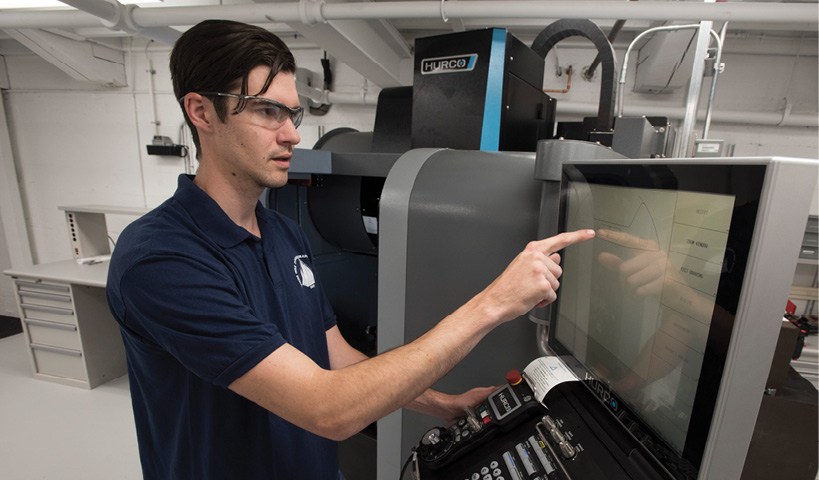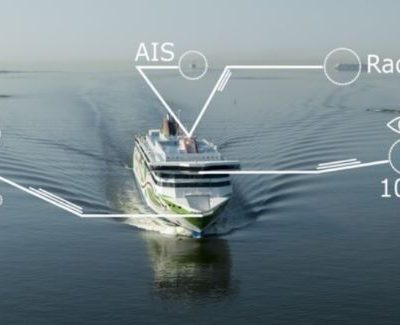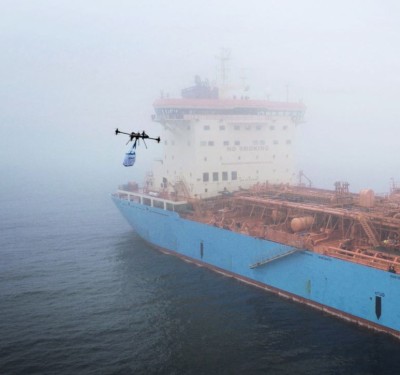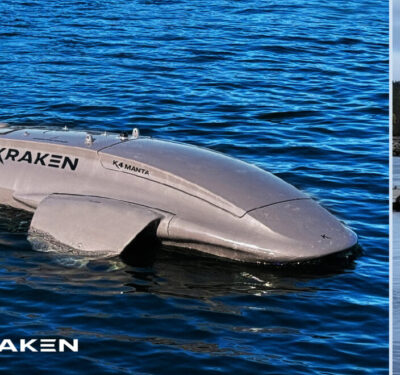
Rapid prototyping can greatly improve the odds of success for new products by shortening development time and limiting effort spent on dead-end ideas. The faster firms can perfect a new device, even to the point of having potential users try it out and suggest changes, the faster inventors will be able to secure new funding and get to the next step.
Now a broader range of innovators will have access to a unique facility on Massachusetts’ Cape Cod designed to help them do exactly that. The Center for Marine Robotics (CMR) has completed its DunkWorks and is opening it to external users.
“So DunkWorks is a rapid prototyping and additive manufacturing facility, which is a fancy way of saying it’s a maker space,” said Leslie-Ann McGee, assistant director at CMR, which is part of the Woods Hole Oceanographic Institution. “Our goal is to advance the concept of marine robotics and make rapid innovations.”
True to its name, which pays homage to Lockheed Martin’s famously inventive Skunk Works, DunkWorks has computer-aided design (CAD), advanced 3-D printing, a laser cutter and a host of other capabilities to do milling, lay circuit boards and complete other tasks. All with the aid of on-site, expert help.
“The concept is to iterate quickly, fail cheaply, fail quickly,” McGee said, because you don’t want to fail when you’re all the way out at sea. “You want your systems to work,” she said, “and you want to make innovations and advances before you get there. Or when you’re out there and you think, ‘Oh, if my thing could only do this’ or ‘If I just added this capability,’ just bring it back and see if we can’t iterate it and rapidly prototype it here.”
There are different types of maker spaces said Julia Spicer, executive director for the Mid-Atlantic Venture Association, but the tools and innovative energy found in some of these build-it/test-it/change-it organizations can help developers iron out a lot of kinks. When “you can bring together a place where (there’s) technology, ingenuity and creativity to build—and to prototype—it advances, if you will, some of the opportunities for entrepreneurial kinds of endeavors.”
High-End Tools
DunkWorks has a number of options for high-end additive manufacturing. During the July grand opening, staff member DC Collasius was printing pitch packs for a glider, an unmanned underwater vehicle. “So it’s the battery pack for the inside of the glider, which actually moves back and forth to control the pitch of the glider. So it’s printing two of them right now,” Collasius said.
The printer in question can build a piece as big as 16 inches x 16 inches x 18 inches high. If something larger is needed the parts can be printed with serrated edges so they can be joined securely with adhesive.
The plastic used is Acrylonitrile Styrene Acrylate, or ASA, a tough material resistant to ultraviolet radiation. “It won’t degrade in the sun,” Collasius said, “so it can sit out in the weather on the ocean and it won’t wear down or anything like that (or) get weaker.”
Collasius is the DunkWork’s “guru,” McGee said. “We have folks come in and they might know the problem that they need to solve, or the advancement that they want to make, but they don’t necessarily know how to do it,” McGee said, so DC is here to help coach them through it.
James Bellingham, CMR’s director, has plans to take the DunkWorks’ capabilities to a new level.
“There are certain metal printing capabilities we would dearly, dearly love to have,” he said, “which currently now are very expensive and actually have a sort of hazardous overtone to them.”
The issue is the powdered metal used for printing in some systems. Should it accidently become airborne, it might become explosive. There are new metal printing capabilities coming along, Bellingham said, that are less risky to use and offer much lower costs.
He also plans to keep upgrading the plastic printers so they have cutting edge capabilities and he has his eye on adding “pick and place” systems—that is robotic assembly.
“So you can imagine again, if you’re building up a system, it’s not going to be all plastic,” he said. “It’s going to have electronic boards and it’s going to have, maybe, some metal pieces. So is that going to be a human assembly process or is that going to be done robotically?”
Soft Robotics
Likely at the top of the wish list, however, are printers capable of making multi-durometer plastic parts—that is parts where the printer can vary the rigidness of the plastic as a piece is being created. “There’s a whole field of soft robotics, which to some degree has actually created that technology,” Bellingham said.
Soft robotics is a new branch of robotics, Bellingham said, that replaces rigid metal structures with rubbery structures that are pressurized and depressurized in such a way that they perform like artificial muscles. These robots can handle items more delicately and with greater dexterity than conventional robots yet also can be remarkably strong, recent research at Harvard and MIT has shown.
You can make grippers with soft robotics that can safely pick up an egg, Bellingham said, where a gripper made with hard metal “could very easily crush and break the egg.”
Reimagining Design
Bellingham also wants to advance the DunkWorks’ design capabilities, expanding and, to a degree, automating the process of designing something new. First he wants engineers to be able to think more broadly about how they approach problems given new capabilities like 3-D printing and soft robotics.
“So it’s kind of interesting, right? You start out with something, which is kind of a maker space, and people can come in and use the robotics or the additive manufacturing systems, Bellingham said. “But then, as time goes on, you start getting the researchers thinking about how it really changes, for example, design. How do you design things in fundamentally different ways? How do you approach problems differently than you would have in the past?”
But Bellingham wants to further evolve the total design process—capturing what has been done before in design modules that can then be plugged into the system, making it easier to engineer even the most advanced devices.
Meta Modular Manufacturing
If you wanted to build a very long endurance vehicle, Bellingham said, the number of elite designers who have really worked hard on that problem is limited. You can probably count on your fingers the number of people who know the processes because they’ve spent years digging into the details.
“But I can tell you, having worked through that process and having built vehicles; I can tell you that once you’ve done it, it’s not magic anymore,” Bellingham said. “There’s a series of steps and those steps are things that you do in a special software tool, which you use, for example, for designing the propeller, for optimizing the motor/propeller coupling, for understanding how the flow around the fairing interacts with the propeller, for thinking about how you package the battery system and then how it interacts with the stability of the vehicle. For thinking about where you place the fins.”
So all of these separate, fairly specialized software tools, which are used by experts who know how to interact with them, these tools could be automated and linked to a larger systems engineering envelope, Bellingham said. “And so that’s the goal—to build that larger framework, which then begins to automate (design) so that somebody can come in who isn’t the expert vehicle designer, but they can get expert-vehicle-designer results out of the system.”
The Center has already got funding for, and begun working on, pieces of a system that employs this semi-automated approach, an approach he calls Meta Modular Manufacturing. CMR also has a test project underway that can be used to experiment with such tools. The Center is working on a long duration vehicle for the Department of Homeland Security to map oil spills under ice, Bellingham said. “So that becomes kind of a test bed for some of the long duration vehicle concepts.”
Going Virtual
DunkWorks plans to add another tool—virtual reality—to help those developing new robotics better visualize the systems they are working on. CMR is experimenting with advanced gaming systems, which it plans to install in DunkWorks’ second-floor space as an aid to rapid prototyping. The idea, McGee said, is for designers to “climb into” the virtual system and work through problems.
“So we take the 3-D scan with our 3-D scanners of an AUV (autonomous underwater vehicle) and we bring it into our gaming environment. You and I climb in with our headsets. We have our virtual pencils and our virtual erasers then we go in and we walk around it together. And you say: ‘Well how about we put the camera here?’ And then I walk around the other side and say: ‘No I think it would work better over here.’ And then we can figure out ways to actually make that system operate in the environment in which we want to operate”
The virtual reality system should also enable engineers to better visualize the ocean environment. “We collect a lot of data globally,” McGee said. It’s one thing to look at ocean current data, for instance on a 2-D screen in charts, but there’s not a way to actually get into it as an environment. “So the question is,” McGee said, “can we bring some of that type of data into a gaming environment and actually be able to visualize it and understand it and make it more useful to us?”
Joining DunkWorks
The stated goal of the Center for Marine Robotics is to open the oceans to humans in new ways—using advances in robotics to improve efficiency, lower costs and reduce the risks of marine operations. To do this, CMR collaborates with industry sponsors, academic partners, and key government agencies “to change the way people and machines work together in the marine environment.
“The Center is a membership research organization,” McGee said. “It’s essentially the interplay between our science and tech group here as well as the academic and industrial components of our industry. You know, our marine robotics companies, small, big—everything from startups all the way up to very large corporations.”
When it opened in 2017, DunkWorks was only available to CMR staff or members of the CMR community—that is the collective membership that supports CMR, often by funding Center projects. Now that is changing. DunkWorks is opening its doors to external members.
A basic membership is $500 a month plus WHOI overhead with a minimum membership of five months. Members are also charged directly for the materials they use. That gets you open access so “you can come in and noodle and tinker,” McGee said. The only other thing (members) will have to pay for is the higher end materials if they want to use the larger 3-D printer. There’s a material cost for that because materials are, in 3-D printing, still very expensive.”
There are “no preconditions” to membership, Bellingham said.
“The idea is for the Center for Marine Robotics’ smaller member companies to be given a certain amount of access to the space,” McGee said, “and then, obviously, we want to attract inventors and startups and things of that nature.”
Judson Poole, who works in WHOI’s Applied Ocean Physics & Engineering department, was on hand during the DunkWorks summer opening, milling a part to fit onto a REMUS 600 autonomous underwater vehicle.
Poole said he chose the machine he was using because it was a quick way to modify the part. If he wanted to build a piece from scratch, there was a 3-D printer he would choose instead that could do the job much faster—and it was sufficiently automated that he could do other things while it was working.
DunkWorks has hosted a biologist laser scanning and printing 3-D models of barnacles and a group of vision-impaired scientists who were discussing whether rapid 3-D printing could help them interact with and understand their datasets. Most of the current activity, however, is focused on design and prototyping.
“At the moment we have a lot of people doing kind of what we expected them to do,” Bellingham said, “which is to do rapid prototyping. They have an idea—they want to mount a camera in a pressure housing but they need to make a very complicated structure. So they come down, they do a laser scan of the camera. They have a model already of the housing. They print something up—uh oh, it doesn’t work because it interferes (with something). They fix it, they print up another one and the next one works.”
If what you want to is figure out how to fix things, and make things, and do things—“this is the place to do it,” Poole said.






